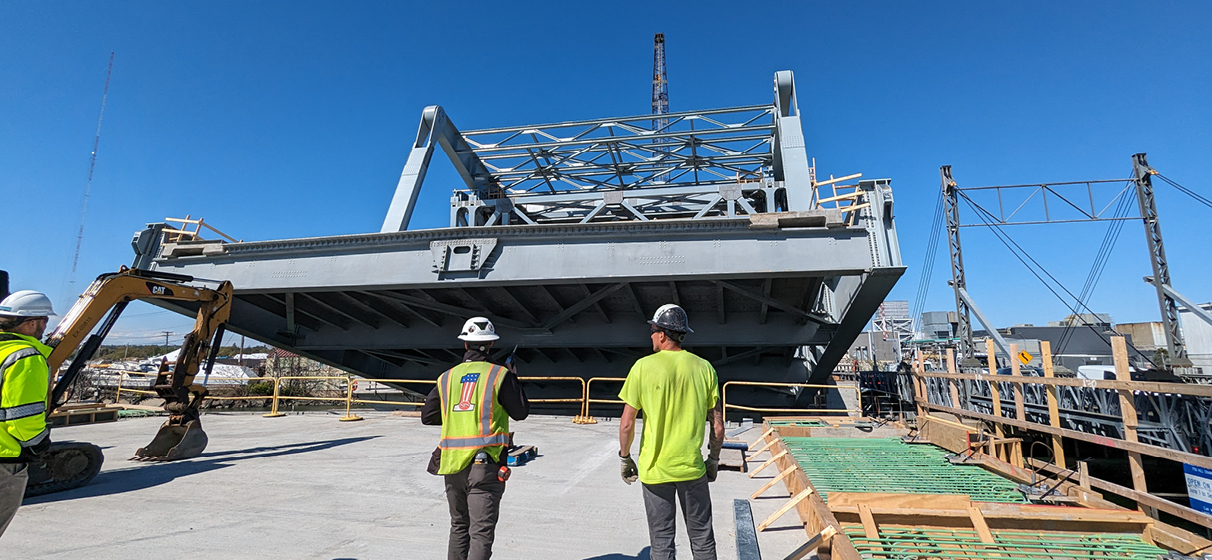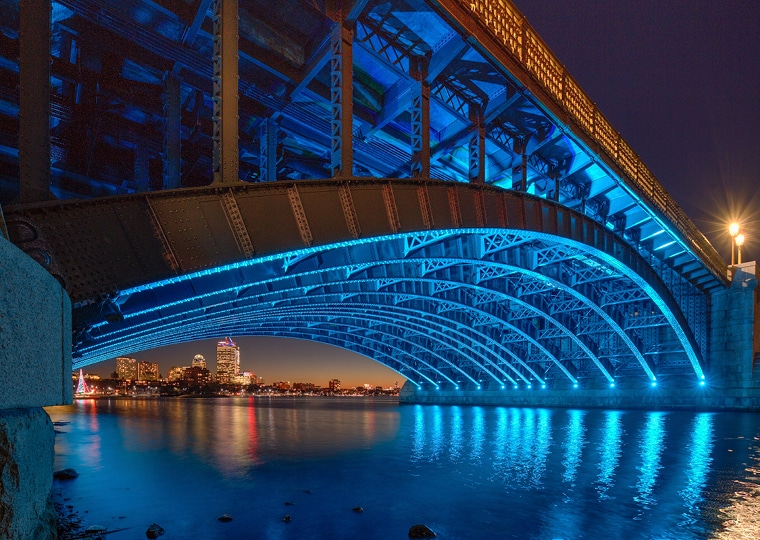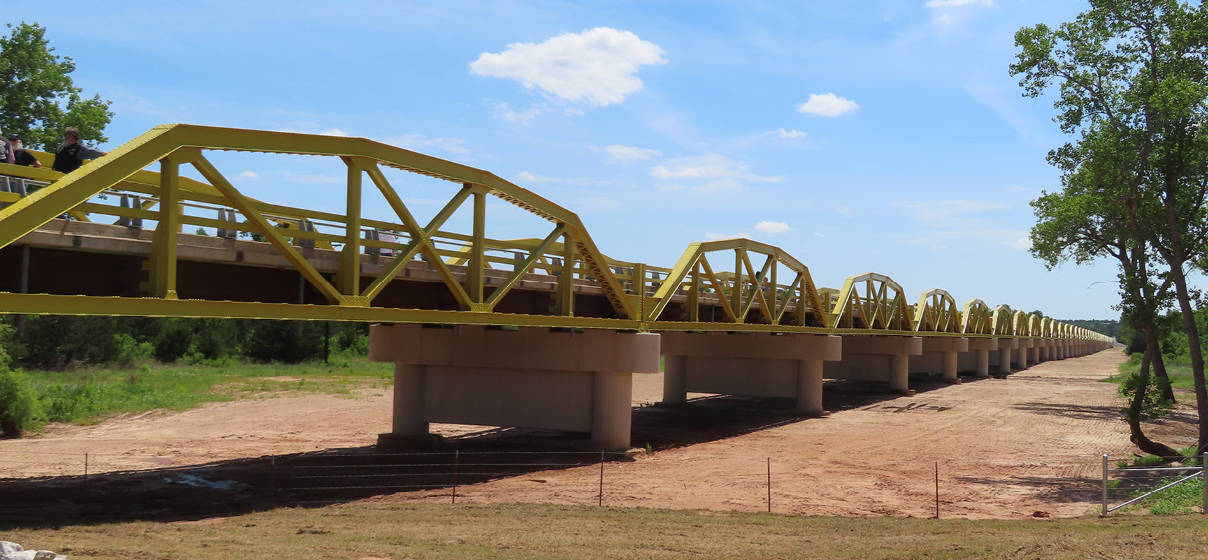As one of the oldest Scherzer Rolling Lift bridges owned by the Massachusetts Department of Transportation (MassDOT), the historic Belden G. Bly Drawbridge between Lynn and Saugus, MA, has become a primary cause of gridlock along Route 107, opening around 40 times per day during peak summer months and frequently getting stuck in the open position.
With an eye on improving traffic and enhancing safety along the corridor, MassDOT has commissioned a replacement structure with a modern, more resilient and efficient structure. Traffic currently uses a temporary bridge, also with a movable span, to carry route 107 over the Saugus River until the replacement bridge is completed. STV is serving as the engineer-of-record for the program, which recently marked a major milestone with the successful test opening of the new bridge.
“The dedication and hard work of our STV team, MassDOT and the general contractor, SPS New England, was instrumental in reaching this pivotal achievement,” said Ennio Eleuteri, STV’s project manager.
STV, a long-standing leader in movable bridge design, is providing civil, structural, mechanical, electrical, geotechnical, architectural, traffic and cost estimating services for the design of the new drawbridge. The firm’s final design incorporates a 77-foot-long movable span that rotates on a heel-trunnion, offering an innovative solution for the bridge’s three spans. The design positions the counterweight and mechanical equipment above the roadway deck, separating the mechanical and electrical systems from the water without the need for expensive enclosed foundation pits. Utilizing precast prestressed concrete box beams, a concrete deck and drilled shafts, the new bridge will support the roadway approach spans and piers. New abutments supported by driven piles will eliminate reliance on the existing timber pile foundations.
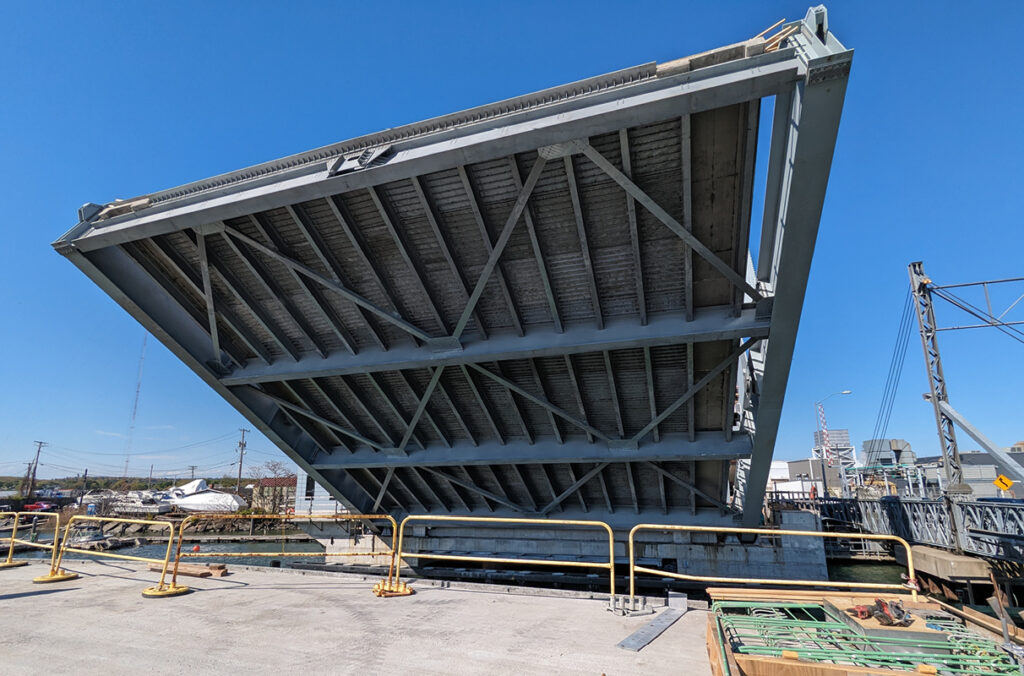
STV’s roadway design plans call for the reconstruction of Route 107 at each approach with sidewalks and bicycle lanes, and for the reconfiguration of the Route 107 and Ballard Street intersection to improve traffic flow, an improvement that is expected to reduce delays by 51 percent during the morning peak period and 53 percent during the afternoon peak times. The second sidewalk and designated bike lanes on the bridge were incorporated for consistency with MassDOT’s Healthy Transportation Policy after the original sketch plan approval.
The program includes an in-depth environmental study, a full analysis of the soil conditions and preparation of plans for a counterweight-over-deck, single-leaf bascule bridge.
For the bridge’s movable span’s operational systems, which include a tender’s house that includes bridge controls and operator accommodations, STV’s design team had to account for an electrical system that includes details for motor and span drive controllers, motors, brakes, grounding and lightning protection, an emergency system and generator, a motor control center (MCC), power distribution panels, navigational lighting, general bridge lighting, roadway lighting, CCTV, low-voltage power, new span locks, traffic gates, a control console, a new bridge logic control system and submarine cables. The mechanical system includes primary and secondary enclosed gear reducers, shafts, couplings, bearings, and the main pinions and segmental gears. The segmental gears have a radius of 18’-9” and are one of the key innovative features of the drive system. All machinery is fabricated and aligned to strict tolerances.
“The navigational lights, along with the fender system, will provide safety for boaters, and the bridge will have roadway traffic warning lights, warning gates, and barrier gates during bridge operation, in accordance with state and federal highway safety regulations,” said Heather Moulton, deputy project manager for the construction phase of the project.
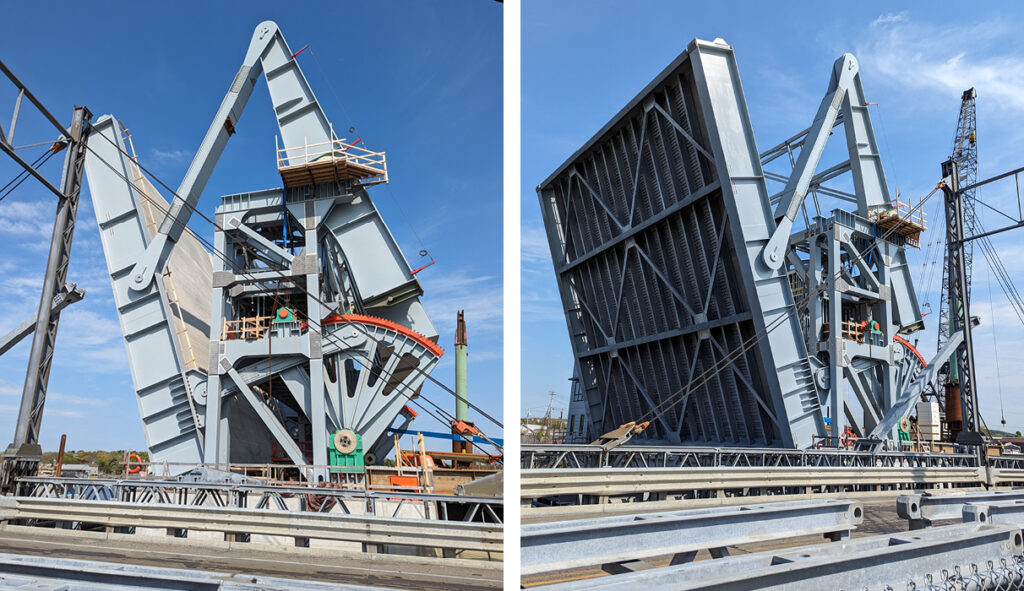
Additionally, STV is coordinating the relocation of an 18-inch-diameter Massachusetts Water Resources Authority water main that runs across the structure. The pipe will be installed in a trench along the inboard side of the bridge. Challenges associated with this work include identifying property and utility impacts, acquiring environmental permitting to address impacts to adjacent resource areas, coordinating with state and federal agencies and designing detailed construction staging plans.
The project aimed to widen the channel from 40 to 50 feet, reducing navigation restrictions. However, dredging to accommodate this widening and submarine bridge cables necessitated an environmental study due to the industrial nature of the site and potential soil contamination. STV’s team researched pollution sources in the area and collected soil samples to identify contaminants like pesticides, volatile organic compounds and polychlorinated biphenyls.
As the design evolved, STV assisted MassDOT in preparing public information sessions and a hearing to gather comments from stakeholders and the public. Upon MassDOT’s approval, STV incorporated feedback into the final plans, specifications and estimates for bidding.
“From upgrading outdated infrastructure to safeguarding new bridge projects, STV’s innovative prevention solutions are enhancing the resilience of waterway transportation networks across the nation,” said Marian Barth, PE, vice president and area manager for the Boston office.
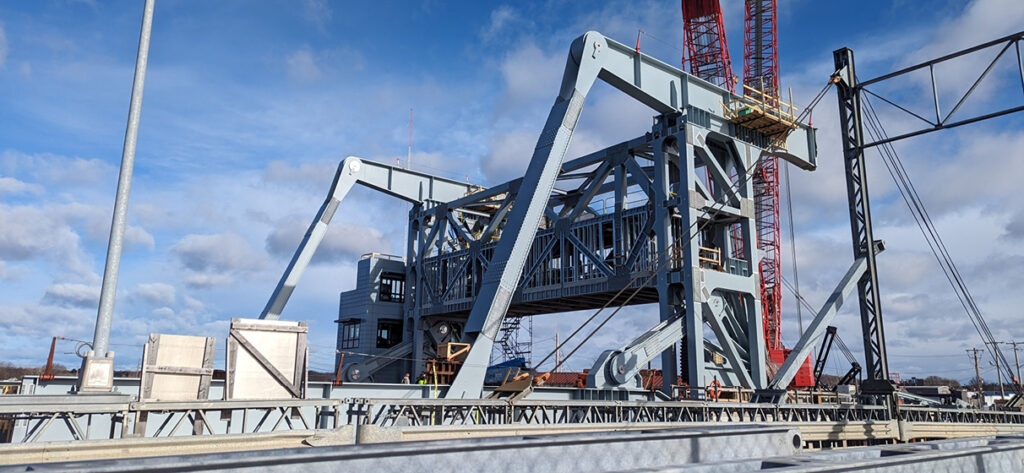
Looking ahead, the bridge must undergo additional testing stages to make sure it is fully operational ahead of opening to traffic. Once that is completed and the northern approach span is installed, traffic will be shifted over from the temporary bridge to this new bridge. This is expected to occur in Spring 2025.
